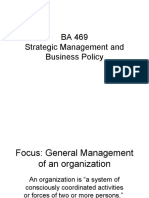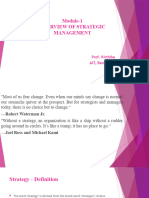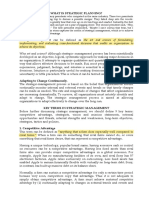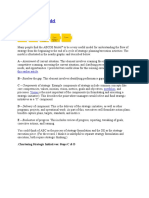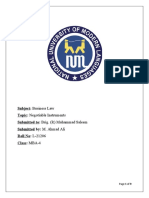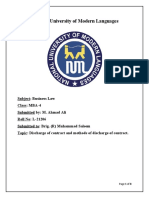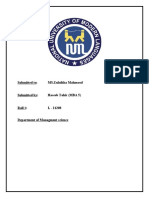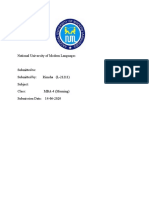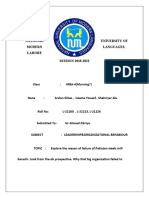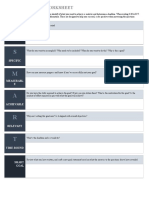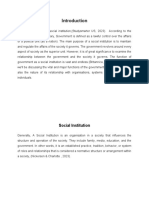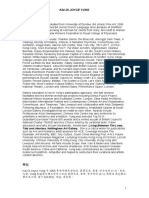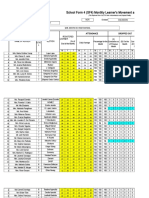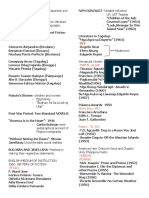0% found this document useful (0 votes)
95 views9 pagesDaniyal Assignment
This document contains an assignment submitted by Muhammad Daniyal Tahir to Ma'am Zulaikha for the course MBA-5(A) at National University of Modern Languages in Lahore. The assignment covers two topics: [1] the ABCDE strategic planning model and [2] the industrial organizational model. For the ABCDE model, it defines each step of the process including assessing strengths, weaknesses, opportunities, and threats, establishing a baseline, setting mission, vision, goals and objectives, and developing action plans. It also discusses evaluating performance using a balanced scorecard. For the industrial organizational model, it outlines how above-average returns are determined by industry characteristics and competitive environment rather than internal firm characteristics
Uploaded by
Wazeeer AhmadCopyright
© © All Rights Reserved
We take content rights seriously. If you suspect this is your content, claim it here.
Available Formats
Download as DOCX, PDF, TXT or read online on Scribd
0% found this document useful (0 votes)
95 views9 pagesDaniyal Assignment
This document contains an assignment submitted by Muhammad Daniyal Tahir to Ma'am Zulaikha for the course MBA-5(A) at National University of Modern Languages in Lahore. The assignment covers two topics: [1] the ABCDE strategic planning model and [2] the industrial organizational model. For the ABCDE model, it defines each step of the process including assessing strengths, weaknesses, opportunities, and threats, establishing a baseline, setting mission, vision, goals and objectives, and developing action plans. It also discusses evaluating performance using a balanced scorecard. For the industrial organizational model, it outlines how above-average returns are determined by industry characteristics and competitive environment rather than internal firm characteristics
Uploaded by
Wazeeer AhmadCopyright
© © All Rights Reserved
We take content rights seriously. If you suspect this is your content, claim it here.
Available Formats
Download as DOCX, PDF, TXT or read online on Scribd
/ 9






